Even though technology plays a vital role in business growth, it can often become a double-edged sword. The right digital tools and strategies drive productivity, innovation, and profitability. However, inefficient systems, underused software, and outdated processes can quietly drain your IT budget—a challenge made worse in today’s cost-aware business landscape.
A frequently overlooked yet impactful area where businesses can save money and improve efficiency is reducing IT waste. But what exactly is IT waste, and how can identifying it improve your bottom line?
Understanding IT Waste
IT waste involves any unnecessary costs, underutilized technology, or inefficient processes that fail to contribute real value to your business. It may be as obvious as an unused server or as subtle as software with functions no one uses. Regardless, IT waste erodes your budget, creates inefficiencies, and poses potential security and compliance risks. Eliminating it can lead to significant financial savings, operational improvements, and even environmental benefits.
Where IT Waste Hides
Businesses today often operate with complex IT infrastructures, and waste can hide in many places. Here’s where to look:
1. Unused Software & Licenses: Many organizations pay for software solutions that are barely used—or worse, never fully implemented. These unused licenses can add up to thousands in monthly costs. Regularly reviewing usage reports can help identify and eliminate tools that are no longer needed.
2. Obsolete Hardware: Aging laptops, desktops, and servers that crash frequently or run slowly can hinder employee productivity. They also tend to cost more in ongoing maintenance. Retiring outdated hardware can improve performance while reducing costs.
3. Shadow IT: When employees download apps or use tools outside of your official tech stack, it creates duplicate systems, increases risks, and leads to inefficiencies. Shadow IT often signals that your current system isn’t meeting user needs.
4. Overlapping Tools: It’s not uncommon to find multiple tools within a business meant to do the same job. For instance, having several different project management platforms can create confusion, divide teams, and inflate expenses.
5. Data Hoarding: Holding on to outdated or redundant data can significantly drive up storage costs. It also complicates data backup efforts and increases your compliance risk.
6. Data Loss: On the other hand, poor data handling—whether from security failures or aging infrastructure—can damage customer relationships and result in lost business.
7. Manual Processes: Many teams still rely on manual data entry and repetitive tasks that could be streamlined through automation. This keeps staff from focusing on strategic priorities.
8. Break-Fix Support: An IT approach that only reacts to breakdowns often leads to extended downtime, lost productivity, and increased emergency costs.
9. Poor Performance: Slow systems, long response times, and delayed applications waste precious work hours and frustrate employees.
Steps to Remove IT Waste
Reducing IT waste is not a one-and-done task—it requires ongoing evaluation and optimization.
Here’s a step-by-step guide to getting started:
Perform an IT Audit: Begin by cataloging every piece of hardware, software, license, and IT service your company currently uses. Determine which tools are active, which are outdated, and which offer little to no return. Usage reports and vendor invoices can shed light on actual engagement levels.
Get Employee Insights: Your frontline team members often have the clearest view of what works and what doesn’t. Gather their feedback to uncover bottlenecks, usability issues, or unnecessary software.
Streamline Data Management: Identify duplicate, outdated, or trivial data. Create data retention policies that define how long you’ll store different types of data and when to securely dispose of them.
Consolidate and Eliminate Redundancies: Reduce the number of overlapping platforms. Migrate to multifunctional tools and cancel underused licenses. This reduces cost and simplifies workflows.
Automate Repetitive Tasks: Free up employee time and boost throughput by automating routine tasks like data entry, email notifications, or reporting.
Modernize Infrastructure: Replace outdated hardware and software with cost-efficient, up-to-date alternatives. This reduces downtime and increases productivity.
Evaluate IT Support: Instead of working with reactive providers who only address problems after they occur, consider a Managed Service Provider (MSP) that delivers proactive planning, security, and performance optimization.
Partnering with Cytranet to Eliminate Waste
Unchecked IT waste doesn’t just strain your budget—it slows teams, frustrates employees, and impedes growth. That’s why partnering with a proactive IT firm like Cytranet can make all the difference.
At Cytranet, our approach goes beyond basic support. Our Fractional CIO services enable you to uncover hidden inefficiencies, align IT with business objectives, improve system performance, and plan future technology investments strategically. We work with you to ensure your IT is an asset, not a liability.
By eliminating IT waste, you can unlock budget flexibility, accelerate innovation, and boost overall productivity.
Ready to make your IT smarter and more efficient? Contact Cytranet today and take the first step toward a more streamlined, cost-effective future.


